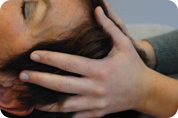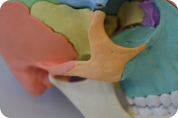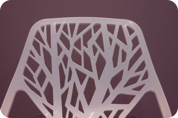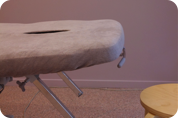An osteopathic consultation consists of four steps:
➀ The anamnesis:
During the first consultation a health assesment is being established. It is highly recommended to bring all medical imaging material (like X-rays, scans, NMR, echography, ...) and/or results of previous analyses (blood analyses, ...). Afterwards the anamnesis takes place, during which the osteopath asks questions about the complaints of the patient to be able to know which structure is causing the complaints. The patient has to properly inform his osteopath about his health status, to avoid possible serious problems (fractures, illnesses, ...). If necessary the osteopath will redirect the patient towards his physician.
➁ The mobility investigation:
The osteopath searches for a lack of mobility throughout the whole body (in parietal, visceral and craniosacral systems). Thanks to this investigation the therapist can find the origin of the complaints and establish a treatment scheme.
➂ The treatment:
By means of manipulations (if necessary), mobilisations and stretching techniques the osteopath improves the mobility in the body. The therapist resolves the cause of the complaint and hereby stimulates the selfheeling process of the body, in order to rebalance it. The treatment will be different for each patient and each complaint. The used techniques are safe, painless and soft. No devices are being used, nor is medication prescribed.
➃ The debriefing:
In simple words the osteopath explains what was the reason of the com- plaint and what the treatment was about. If you have any questions, feel free to ask them! Good communication and confidence between patient and osteopath are primordial. Sometimes the therapist will give you some nutritional advice or exercices to do. A reaction can occur after the treat- ment, but it usually disappears after 48 hours. Indeed, the body has to adapt to the new situation. Some complaints disappear immediately, others might take a little more time. Three to five treatments are usually needed for the patient to totally recover; this depends of the type of complaint (acute or chronical).





